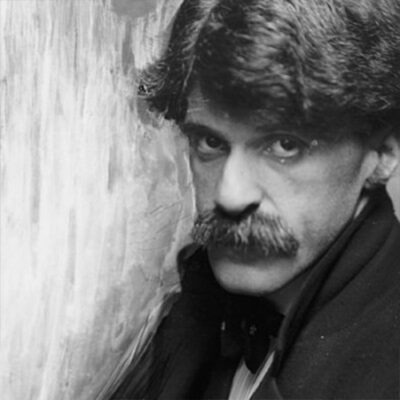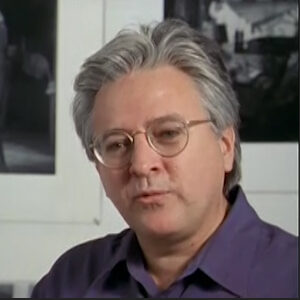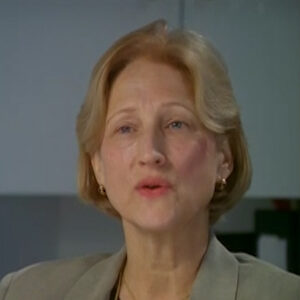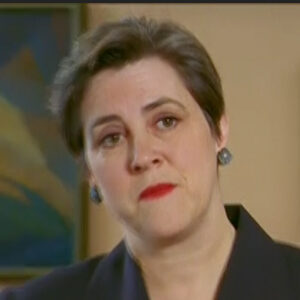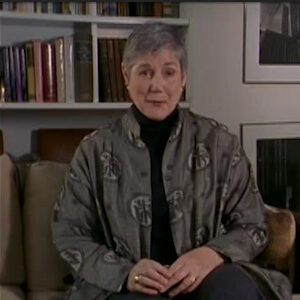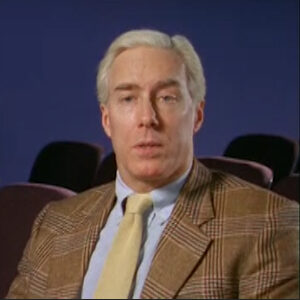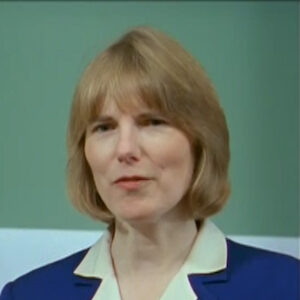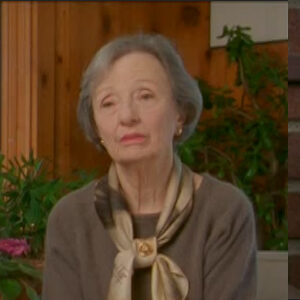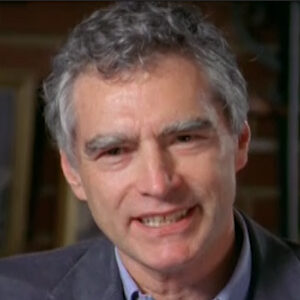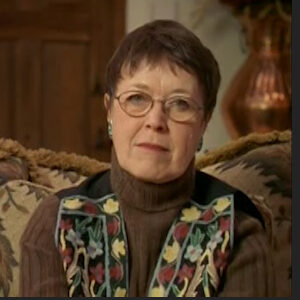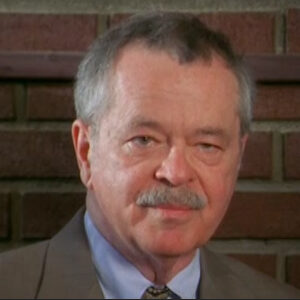Interviewer: Could you tell us a little bit about. The great change in America, say. From the eighteen eighties to 1890, what was there of. A big things that happen.
Trachtenberg: Well, certainly in retrospect, it would seem that American society in the two or three generations, let’s say between World War, between the Civil War and World War One, underwent a radical might even say a revolutionary transformation. What it actually felt like to live at that time, you know, might very well have been a different matter. That is the sense of living in the midst of of rapid change always is clearer in retrospect than at the moment. But from a historical perspective, what we can say is that beginning, let’s say, in the late 80s, 70s, going through the mid 80s, 90s, there was a very rapid increase in industrialization, particularly in large urban centers in the east, the Northeast and the Midwest. Cities like Chicago, Detroit, Cleveland, New York, Philadelphia, Pittsburgh underwent very rapid expansion. The expansion was largely an effect of the influx of numbers of immigrant immigrants, rather, from various areas in Europe that hadn’t yet been fully represented in the American population. So to two older Americans, it felt like a new kind of immigration. People coming from the southern Mediterranean regions, Italy, Greece, from Eastern Europe and from Russia and Poland as well. Many were Jews who tended to concentrate chiefly in the New York City area. Many were Catholics, which, of course, ran against the grain of the predominant Anglo-Saxon Protestantism of the older population in America. So simply the rise of large cities, the influx of immigration, the expansion of the industrial plant, the appearance of very large scale factories, a new kind of physical structure appearing both at the center and the perv at the periphery of cities, all represented something quite new. The older traditional idea that prevailed before the Civil War of America, being predominantly a rural society of small communities, was being challenged directly there on the streets of the new large polyglot cities. This doesn’t mean that that the population of the United States on the whole began to think of itself as essentially urban rather than rural. I think there was a lag in that kind of national consciousness or awareness about the nature of the society. But that certainly was going on. And with that, of course, came a whole set of different problems, conflicts that hadn’t yet appeared in precisely this form prior to this development. And I’m thinking specifically of conflicts between people working in these mills and the owners of the mills.
Trachtenberg: One of the great issues that did appear before the public discussed in the newspapers was a parent in the actual events occurring in cities. And I’m talking about demonstrations, strikes. Was the conflict between labor on one hand and capital on the other? It was in 1877, I believe railroad strike for the first time made it appear as if the working class was a national entity that could stop the normal activities of a society on a national scale. The railroad strike spread from, I believe, the Baltimore Washington region to the north and also to the west, and made it seem as if the conflict between labor and capital was no longer local, no longer confined to specific communities, but potentially could affect the entire country.
Interviewer: Look how how lucky you are.
Trachtenberg: Well, it’s important.
Trachtenberg: I think that in the same period when the steel industry, for example, using new procedures in the factories were expanding and then toward the end of the 19th century, when electricity began to replace steam as the predominant mode of power which permitted assembly line production and also the the linear expansion of factories. At the same time, a new infrastructure was developing in the cities in New York City, for example, mass transportation. This was going on, of course, in many cities, virtually every city in the United States, though not every city, went underground the way New York City did starting in the 80s, 90s. But the use of of first steam and then electrical power to create a new system of surface transportation as well as underground transportation is a product of these years, certainly that that affected the sense of space and time, the relationship between space and time in the cities, the creation of large bridges across rivers that intersected for bisected many cities. The best example, perhaps, is the Brooklyn Bridge, which opened in 1883 and was a super celebrated at the time properly as a an extraordinary achievement of modern technology and contained within it an image of the unification of urban space. Of course, particular to New York in relation to Brooklyn. You had the creation of what became not too many years later a single governing unit.
Trachtenberg: But I think it was it was symbolic and typical of developments everywhere in the country that bridges were appearing. Traffic bridges between sections of cities going toward the consolidation of more and more space on their single municipal governments. Well, the rise of the skyscraper occurs roughly the same time it is part of the same development. The tall building conventionally is understood to have its beginnings in Chicago with the work of people like route. The architect route. And Daniel Burnham. And particularly Louis Sullivan, whose significance is that he among them all conceived of the skyscraper as a new aesthetic form and developed a notion of the tall building as a an organic form that could be designed in a way analogous to the design of a tree, for example, with a base and a trunk and a top that is distinguished with a heavy cornice line. And that form spread throughout the country using new materials. The Chicago School of Palmy Architecture particularly experimented with the use of a steel frame which made it possible to lighten the load of the walls. The external walls of the skyscraper to make that wall, in effect, a curtain leading ultimately to the development of the glass wall, which appears in what’s known as the international style architecture in the 20th century.
Interviewer: Oh, that’s wonderful. Really? Two room.
Trachtenberg: Well, let me rephrase.
Trachtenberg: At the start, there was a British visitor to United States in this period, the eighteen eighties, who published a book called Land of Contrasts. And indeed, to many observers, the United States is becoming increasingly split. Increasingly polarized into sections that stood in opposition and in contrast to each other. This is perhaps nowhere more visible than in New York City, where, because of the linear structure of the city itself, a downtown and a street direct movement to an uptown. It was possible to move that city along a straight line and step by step, virtually see different social realities starting at the bottom of the of the city in the financial district, moving out of the financial district district into the Lower East Side, where the immigrant population congregated at such density that it created what was described at the time as the most crowded region on earth and any city in the world in the Lower East Side, more population jammed into smaller spaces in the.
Interviewer: Tell us about the cultural climate in New York. In 1890.
Trachtenberg: Well, you see, I think it’s important to realize that a sense of greatness, a sense of being the metropolis of the country and therefore of the whole new new world came into being in New York City before even this era in the antebellum period and the years before the civil war, the year when Whitman, for example, was absorbing the experiences, the sights, the sounds, the great diversity of his beloved Manhatta. The idea existed.
Trachtenberg: Whitman gave expression to it and others that as well, that New York, with its great range and diversity of population, with its energy, with its cultural institutions, with its art galleries, with its opera, with its new places where a new a new cultural phenomenon known as photography was being made and shown in the daguerreotypes studios that New York was typical of the United States and typical of modernity as a whole, typical of the promise of the future. By the time you get to the end of the century, the 80s and the 90s, this current of thought about New York City was achieving even more secure, stable and monumental forms in the creation of such large imposing cultural institutions as the New York Public Library. Forty seconds to the Metropolitan Museum. Other museums. The Historical Society on the other side of Central Park. And there was a sense that New York was a place of the concentration of cultural wealth, cultural goods. One has to mention the universities as well. New York University downtown. The even greater Columbia University uptown. What’s interesting is that at the very turn of the century, another idea began to filter into public awareness. And I’m thinking specifically of an article that appeared in Scribner’s magazine. Nineteen one or two or three there was making the point that the very greatness of New York City was awaiting its visual representation in the arts, that New York City would not achieve the kind of worldwide recognition of splendor such as Paris or London until it had a school of native artist New York artist who would represent and reproduce in the permanent form of visual images of this very exciting and unique place. It’s very interesting that this article that I’m thinking of was illustrated with photographs by Alfred Stieglitz. The photographs were taken in places like Central Park along 5th Avenue, some downtown scenes that were primarily images that conveyed a sense of New York as a walking city, a city that the light, the eye at every turn. A city where there was a good deal of public statues. Where there were interesting avenues to walk along Fifth Avenue. The lights at night in front of the Plaza Hotel gave you a sense of real urban excitement.
Trachtenberg: I think that the relationship between photography and representation of the city, which comes to such a point in Stieglitz, his own work in the late 90s and early 20th century, does have a history that is even even as early as that, the Garra type era. There were photographers, although the Garra type was a clumsy instrument, thinking that that kind of camera into the cities, into the city streets, or aiming the camera out of studio windows, looking at city streets, trying to catch the energy and the vibrancy, the movement, which was hard to capture with the slower cameras of those days when the kind of photograph known as the stereo card appeared starry eyed graphy, which gives you a three dimensional image. The city was one of the favorite subjects and photographers, photographic entrepreneurs were published a series of stereo cards dealing with the lower part of New York Island, Manhattan Island, dealing with the Central Park region. There are many, many images of Central Park in the 60s and 70s and 80s on stereo cars.
Trachtenberg: So there is a tradition in what we could call vernacular, even though it is also commercial photography. Before Stieglitz and his movement, the photo session, which took New York City as one of its great subjects and made now images not for the the entertainment of the eye of the masses, so to speak, but instead made images that had all of the look and the seriousness of works of art that could stand on gallery walls, that could hang on gallery walls. Was, I should say, framed as pictures unto themselves.
Trachtenberg: The images of the city that we first find in Stieglitz in the late 90s and spilling over into the early 20th century, and the kind of pictures that were used to illustrate the article that I referred to in Scribner’s magazine probably are well described under the heading, which was a title of a collection, a portfolio of pictures that Steagles put together in the late 90s called Picturesque Bits of New York. The. Of the picturesque is extremely important in this early pre modernist photographic experience of the city.
Interviewer: Use the word pictorial.
Interviewer: You’ve mentioned photo secessions and I think we need Victorianism. Yes. So could you tell us a little bit about the kind of photography that was and the the amateur devilment amateurs or they were doing, which was different? Then the general kind of photography.
Trachtenberg: Web site, pictorial ism, I guess, is best understood as a mode of photography that was practiced chiefly by the growing number of amateurs, self-proclaimed amateur photographers in the late 80s and 90s and at the turn of the century, a movement which really continued and still continues into the 20th century. The amateur is someone who is deliberately not using the instrumentality of photography to make a living or to produce a a an image that has a function, either a commercial function or a scientific function, or even the practical function of simply memorializing certain events as in family snapshots. For example, the pictorial list takes seriously the idea that photography can be an art. Now you can say that while the early modernist photographers felt the same thing. How do they differ from pictorials? Well, the idea of a picture in photography that prevailed among the amateurs in the 90s was an idea that was essentially taken over from the other visual arts and pictorials, attempting as much as they could to give their pictures, the look of an etching or even a watercolor. They frequently tinted their pictures. They used various printing techniques, combining different chemicals, using different papers to give a tone to the image that would set it apart from merely literal black and white photography. Stiglitz was caught up in this for a little while, but he very quickly rebelled against pictorial ism as a certain kind of hardiness and fakery.
Trachtenberg: And in his own work, the picturesque photographs of New York, what he called picturesque bits of New York.
Trachtenberg: He is, let’s say, sort of partly in the pictorials mode, but already out of it in that he doesn’t tamper with the image. He doesn’t manipulate chemicals.
Trachtenberg: It doesn’t use paper that gives you a different tonal effects.
Trachtenberg: He’s using primarily platinum paper, as far as I know, which gives you a good, clear black and white effect. But he is seeking those moments, what he calls bits in the work experience that can be rendered picturesquely with a certain certain atmospheric effect. Some fog, some smoke reflection. And he was very fond of this reflection of lights on wet streets.
Trachtenberg: The patterns of snow, for example, these are elements that will pretty much, I think, disappear or will be radically transformed in the modernist photography that will come shortly thereafter. And Stieglitz, his own work, as well as the work of his great followers, has his man, him, whom he mentored. Paul Strand in particular.
Interviewer: You know, there’s more that can be said. Desert.
Interviewer: Could you tell us a bit about this? This very exciting era, I think was. Question era.
Interviewer: What was it like 1910 to World War One? Can you tell us something about that area? Wonderful.
Trachtenberg: I remember reading something recently in The New York Times, I think a group of people were asked when would they when in history would they have preferred to live?
Trachtenberg: And somebody did choose this very era. And I can understand why this was the beginning of something really new. We’ve spoken about the the changes that were occurring in the previous few decades in the United States. And so a sense of change, which means a sense of difference and of opportunities. Promise we’re accumulating was accumulating and reached a certain pitch.
Trachtenberg: Some historians have identified the year 1912 as the very time when it happened, when there was a break rupture in the consciousness of many people, particularly young people interested in the arts, interested in ideas. They began to think and behave in a much different way. There was a sense of the sense that the past needed to be criticized. The past needed to be different from the past, needed in some sense to be overthrown. And so a sense of rebelliousness and indeed a revolution came along here. It was cultural as well as political as an era of socialism. Nineteen twelve was the year when Eugene Debs running for president, the socialist ticket gathered more than a million votes. The height still hasn’t yet been matched in a century of articulate dissent on the part of a significant portion of the American population. It was a period when people from young people, from outlying districts, the provinces, small villages, small towns were pouring into New York, particularly into Greenwich Village, a place which represented a new freedom for them, sexual freedom, as well as creative freedom. So it was it was an era when this little magazine appeared as the vehicle for the expression of this sense of heightened promise. The magazines were often were associated with political movements like Mother Earth and the Goldens magazine, like the masses.
Trachtenberg: But one journal in particular, which actually appeared a little bit later than 1910, but 1916, I believe, was 1916, 1917 called Seven Arts was a particularly significant journal. This was a an effort on the part of a group of intellectuals and writers, many of them very close to Alfred Stieglitz, to create a journal that would. Look toward the reintegration of artists into the the nervous system, so to speak, of American culture. The effort here was to find a language to fulfill the promise of American culture, a democratic promise of American culture, which this group found, particularly in the writings of Walt Whitman. The Seven Arts was not a journal devoted to Walt Whitman, but it was devoted to some of Whitman’s important ideas, not only in his poetry, but particularly, in fact, in his great essay called Democratic Vistas, which was written in the 18th 70s, which Whitman said, in order to fulfill itself, in order to survive as a political society. The United States had to develop a culture that was appropriate to its democratic political principles. And so writers like Paul Rosenfeld, like Wilder Frank. The two of them in particular, very close to Alfred Stieglitz, like Van like Brooks, who also published that had published in 1912. His very important book on America’s coming of age, as he put it. Lewis Mumford was not directly involved with seven arts because he was too young. But he recalls in his in his memoirs The Impact of Reading Seven Arts as he was a young teenager at the time, opening up possibility, filling him with a sense that there was a role. There was a place for the intellectual and the artist in an American life, a life that seemed to be otherwise dominated by commercialism. As we went into the war years also dominated by jingoism, by a terrible nationalist chauvinism which this journal opposed, opposed vehemently. In fact, its opposition to the war, America’s entry into the war in 1917 resulted in the magazines being suppressed through music, through through random.
Interviewer: Yeah, yeah. I’m getting to get through.
Trachtenberg: By cancelling its its rights to to let me back up here.
Trachtenberg: What I’m getting at is that what the government did was to take away the right to mail the journal. But you don’t need to go into the that. The journal was suppressed.
Trachtenberg: One reason for the suppression of the journal is that toward the end of that first year of publication, it began to to to publish a group of essays by one of its editors, a young man named Randolph Bourne, which were outspokenly anti-war. Moreover. Not only were they against the government’s policy in entering this European war, it was also against the compliance of intellectuals are in support of the war. Bourne was in some ways prophetic, in many ways prophetic of what would come in the 1960s and 70s when opposition to the war in Vietnam began to build up momentum and include more and more academic people, intellectuals, writers and scholars.
Interviewer: With seven hours and we end with with those people and his own group, OK? Take five.
Interviewer: It the seven arts group to start again.
Trachtenberg: If the seven arts group had any single figure in mind as an example of how an artist might work to participate in an emerging new national culture, that figure was Alfred Stieglitz. Stieglitz was perhaps a half a generation older than most of the editorial group. He was not part of the editorial group, as far as I know, but he was extremely close to two young men in particular who were part of that collective. That was Paul Rosenfeld, the music critic and the frank general men of letters, novelists and cultural critic.
Trachtenberg: Stieglitz was considered someone who was especially important because he was a photographer, because he worked with a medium that was very much a modern medium, which had some symbolic link, at least with mechanization. The camera is a machine of sorts. It’s based upon science and technology.
Trachtenberg: And he presented a model of how these science and technology as large social forces might be brought under the control, under the mastery of the idea of art. He presented an example of control by aesthetic rather than political or any instrumental ideals.
Trachtenberg: For that reason, Stieglitz, his name appeared frequently in Seven Arts.
Trachtenberg: There was one important article on photography that appeared in that journal by Paul Strand, and Strand’s singled out Stieglitz as the great exemplar of a photographer who was able to achieve a modern vision, a particularly modern vision through the particularly modern instrument, the camera.
Trachtenberg: Stiglitz also as someone who whose roots are in Germany, his family is a family of German Jews immigrating to the United States roughly in the early post-war civil war era.
Trachtenberg: I believe that’s right.
Interviewer: The father. They were here.
Interviewer: They were here. OK, I’m sorry. Right. Right. Stieglitz, Heidi.
Trachtenberg: I felt a special affinity with German culture. He studied in Germany. He went to Germany, traditionally, I believe, to study engineering. It was there that he discovered photography became far more interested in in photography. Fascinating. I’m sure by the optics and the chemistry of this new device, but also by the opportunity to to produce pictures. And so devoted himself in Germany to the serious advanced study of the art and science of photography, German culture, its music, its architecture, its literature remain extremely important to him. He was particularly upset and offended by the anti German feeling. I guess also a little bit frightened by it as well. That appeared during the World War One era at the United States. Enter the war, especially in this sense. He was certainly sympathetic to compassionate toward the fervent anti-war position of young people like Randolph Bourne, born, was personally hounded and intimidated by government agencies. His apartment broken into, his papers gone, rifled.
Interviewer: Rule 24, saying something to them about. About poor spread.
Interviewer: And something about his relations with with Stieglitz. And then maybe the break was about. About Paul’s friend.
Trachtenberg: Paul Strand first met Stieglitz. According to the story, when he was a student in a photography class at the Ethical Cultural School on the Upper West Side of New York, his teacher in a class was none other than Lewis Hine, who would go on to make a great career for himself as a documentary photographer. I should say, rather than a great career for himself, he would make a major contribution to his own career. Toward the end began to fall off. But Hind made a major contribution to the development of serious photography in the 20th century. And so it’s interesting, significant that in a way, Lewis Hine delivered the young, abundantly talented Paul Strand to Alfred Stieglitz.
Trachtenberg: It was Stieglitz who became then the major influence on Strand’s development as a photographer, as an artist, because from Stieglitz and particularly from the people who were gathered at Stieglitz, his gallery, 291 91 Lower Fifth Avenue Strand, developed ideas about how interesting pictures might be made in photography without resort to any of the devices of manipulation, of fakery, of a kind of false hardiness, of the pictorials movement with which Teege was by this time had broken.
Trachtenberg: Stieglitz felt that Paul Strand really represented the new wave. That strand emerged directly out of Stieglitz, his own experiments, his own earlier work, and pointed toward the future stand Strand’s work in the early years, when he was very close to Stieglitz shows a lot of experimentation. Much of it is, or some of it at least, he knows is experimentation in abstraction itself, which was certainly part of the the artistic climate at that time.
Trachtenberg: His most interesting work, I think, and many people think, actually took place on the streets of New York. Here he is continuous with Stieglitz, his earlier urban photography, which is not exactly street street photography, but does include some pictures that seem to be taken at eye level of spontaneous, unrehearsed scenes on city streets. Strand was looking for people on the street.
Trachtenberg: He was also looking for patterns into which people walking, moving in crowds could be detected as creating through the eye of the camera.
Trachtenberg: His early city pictures then include group scenes with very interesting configurations silhouette, a group of people sort of marching and appearing as silhouettes against the facade of a bank building down on Wall Street. One of his famous early images also close up pictures, close ups of faces, the great blind woman, for example, and other figures who from the Loarie side, who represent various ethnic and social types, essentially the types so associated with the whites, a lower orders. So Strand’s work is is extremely important. It turned out to be important for a new generation of photographers. Walker Evans, for example, has recorded how his seeing strands work in the pages of the camera work. When Evans was himself working at the New York Public Library, the late 1920s moved him. When he looked at the blind woman, I think he said something like, this is the kind of photography I want to produce. Strand went on to become a filmmaker as well, and especially in the 1930s. His own development was certainly color influenced by his political development, as well as round move more and more toward the left wing politics and toward a position of opposition, particularly during the Depression, to the dominant system of social relations in the United States that is sometimes called capitalism.
Trachtenberg: And there is the story, and I have to confess, I don’t know very much about this of a falling out or at least a falling away, at least between Stiglitz and Paul Strand in the 1930s that may have had something to do with Strand’s increasing radicalism. In politics and Stieglitz perhaps increasing quietism sense that the artist has really no alternative but to withdraw. This was a period when Steeg was really was making photographs primarily from his his room, the room of his quarters and also of his of his gallery, the American place in the 1930s from tall buildings, windows looking out on other tall buildings. These are magnificent photographs, utterly magnificent photographs of the New York skyline of skyscrapers, old ones, new ones, skyscrapers going up, skyscrapers facing older earlier buildings that you get certain glimpses of in the background. And they suggest someone who has withdrawn to a certain position of isolation course frequencies as an older man than Strand. And I think his physical condition had something to do with the fact that he photographed chiefly from his window. He had been photographing from his window as early as as the teens. But the pictures then were pictures that showed more vibrancy of ongoing life in backyards and even on glimpses of city streets. Now, in the 1930s, he’s very remote from all this, while Strand is right there on the streets making films, chiefly working with other filmmakers. Are Horwitt, for one, attempting to produce a documentary form in film that would directly engage the social issues of injustice inequality in the United States? At that time.
Interviewer: A documentary photographer.
Trachtenberg: Well, it’s a touchy question. Certainly, he’s not a documentary photographer. The way Lewis Hine was not in the sense that he sets out to document, to create a picture that will show something for the sake of another purpose, not to expose it in order to make a record of it as high and wanted to make records of child labor in order to publicize the fact that child labor was going on and even against already existing laws in the pre World War One period. I think the mode of his images, those three pictures that I was talking about in the in his youth in the years before World War One could be said to be a documentary mode.
Trachtenberg: But the word documentary is so flexible and sometimes can be amorphous. I think he is more clearly a document documentary artist in his films in the 1930s documentary part documentary.
Trachtenberg: Well, you could one could say that one can say that his intention, his intention is really to produce a picture which stands on its own terms. That doesn’t serve any function other than the function of representing what it represents in the books that Strand made after World War Two. The book’s based on Italy and France.
Trachtenberg: Is that the area around islands in the Hebrides, rather?
Trachtenberg: I’m sorry. These might come closer to being documentary in that they do have an element of this.
Trachtenberg: Let me show you you audience in the United States, what things look like elsewhere. And that could go as some regard fall under a documentary heading. But still, I resist labeling Strand as a documentary photographer. The mode is similar to that of, let’s say, the great photographers of the FSA for a period in the thirties. Walker Evans, Dorothea Lange, Ben Sean. Some similarity in the mode, however, I think the way in which he works and the way which he presents his pictures as fine art. Even in those books, the very handsomely produced books in the post-war period raises a question about whether the term documentary is fully appropriate.
Trachtenberg: So we have only polarized into.

